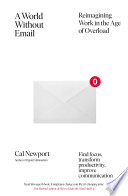

Email has become a primary mode of communication in the workplace, but its overuse leads to significant productivity losses. The constant influx of messages creates a state of perpetual distraction, reducing focus and increasing stress. The book outlines how the average worker spends a substantial portion of their day managing emails, often leading to 'email fatigue.' This overload can result in missed deadlines and decreased job satisfaction. The author argues that organizations must recognize the hidden costs of email overload and consider alternative communication methods that foster efficiency and clarity.
Continue readingAsynchronous communication allows team members to engage in discussions without the need for immediate responses, which can alleviate the pressure of real-time communication. The book highlights various tools and practices that support asynchronous communication, such as project management software and collaborative platforms. By adopting these methods, teams can enhance productivity while maintaining focus on their tasks. This shift not only reduces the number of emails sent but also encourages deeper thinking and more thoughtful contributions from team members.
Continue readingA focus-friendly work environment is essential for maximizing productivity. The author discusses strategies for designing workspaces and workflows that minimize distractions. This includes setting clear boundaries for communication, establishing designated focus time, and using tools that promote concentration. By fostering an environment that prioritizes deep work, organizations can empower employees to produce higher-quality results and achieve their goals more effectively. The book emphasizes that a culture of focus can lead to improved job satisfaction and overall well-being.
Continue readingTo reduce reliance on email, organizations need to implement effective communication protocols that clarify when and how to use different communication tools. The author suggests creating guidelines that outline the appropriate use of email versus other tools like instant messaging, video calls, or face-to-face meetings. By establishing these protocols, teams can streamline communication, reduce misunderstandings, and enhance collaboration. The book provides practical examples of organizations that have successfully adopted such protocols, leading to improved efficiency and team dynamics.
Continue readingThe book explores various technologies and tools that can facilitate better collaboration without the need for constant email exchanges. These include platforms for project management, document sharing, and real-time collaboration. By leveraging these technologies, teams can create a centralized hub for communication and information sharing, which reduces the need for back-and-forth emails. The author emphasizes the importance of selecting the right tools that fit the team's workflow and culture, ultimately leading to more productive interactions.
Continue readingLeadership plays a crucial role in fostering a culture that minimizes email dependence. The author argues that leaders must model the behaviors they wish to see in their teams by adopting alternative communication methods and encouraging their teams to do the same. This includes being transparent about communication preferences and prioritizing face-to-face interactions or collaborative tools over email. By setting an example, leaders can create an environment where employees feel empowered to engage in more effective communication practices.
Continue readingFinally, the book discusses the importance of measuring the impact of reduced email usage on productivity and employee satisfaction. Organizations should establish metrics to assess the effectiveness of new communication strategies and tools. This could include tracking response times, project completion rates, and employee feedback. By analyzing these metrics, teams can continuously improve their communication practices and ensure that they are achieving the desired outcomes. The author encourages organizations to remain flexible and willing to adapt their strategies based on the data collected.
Continue reading